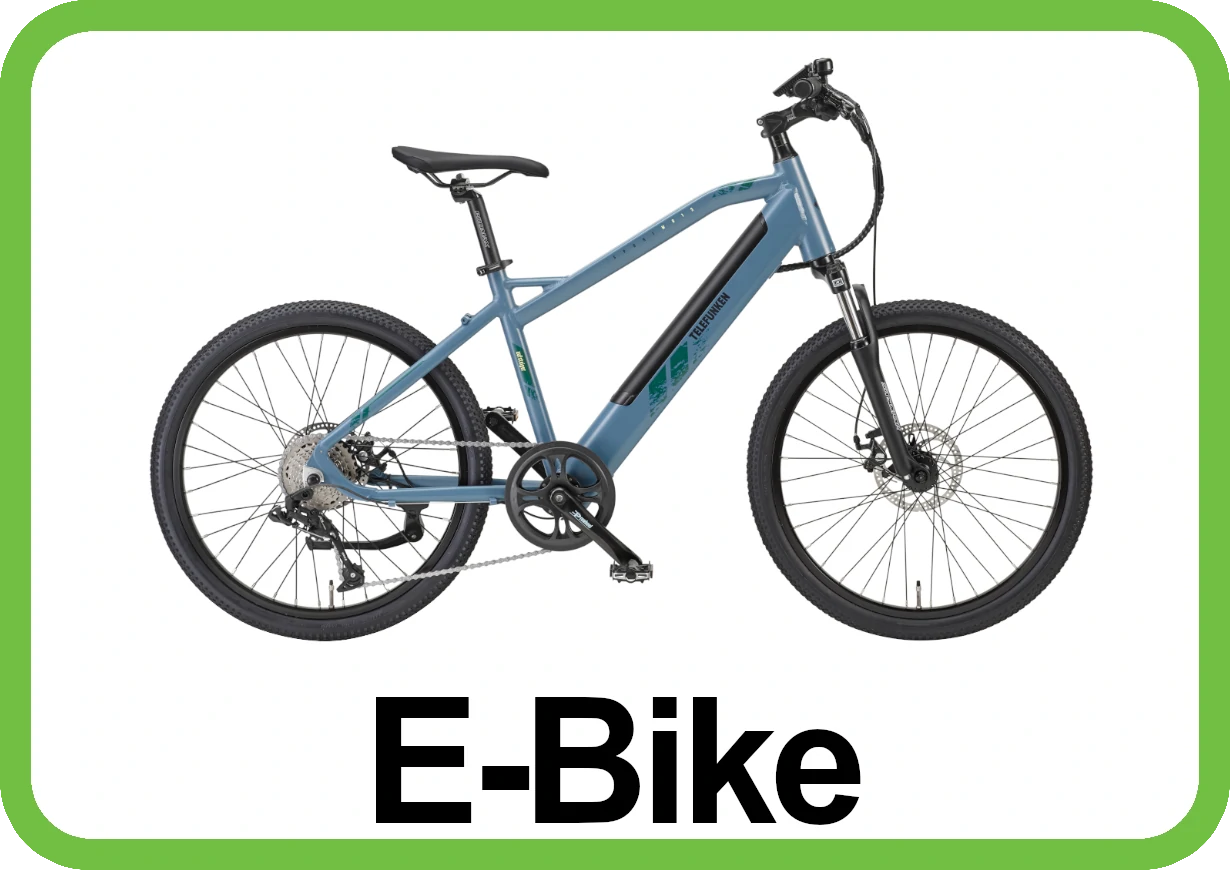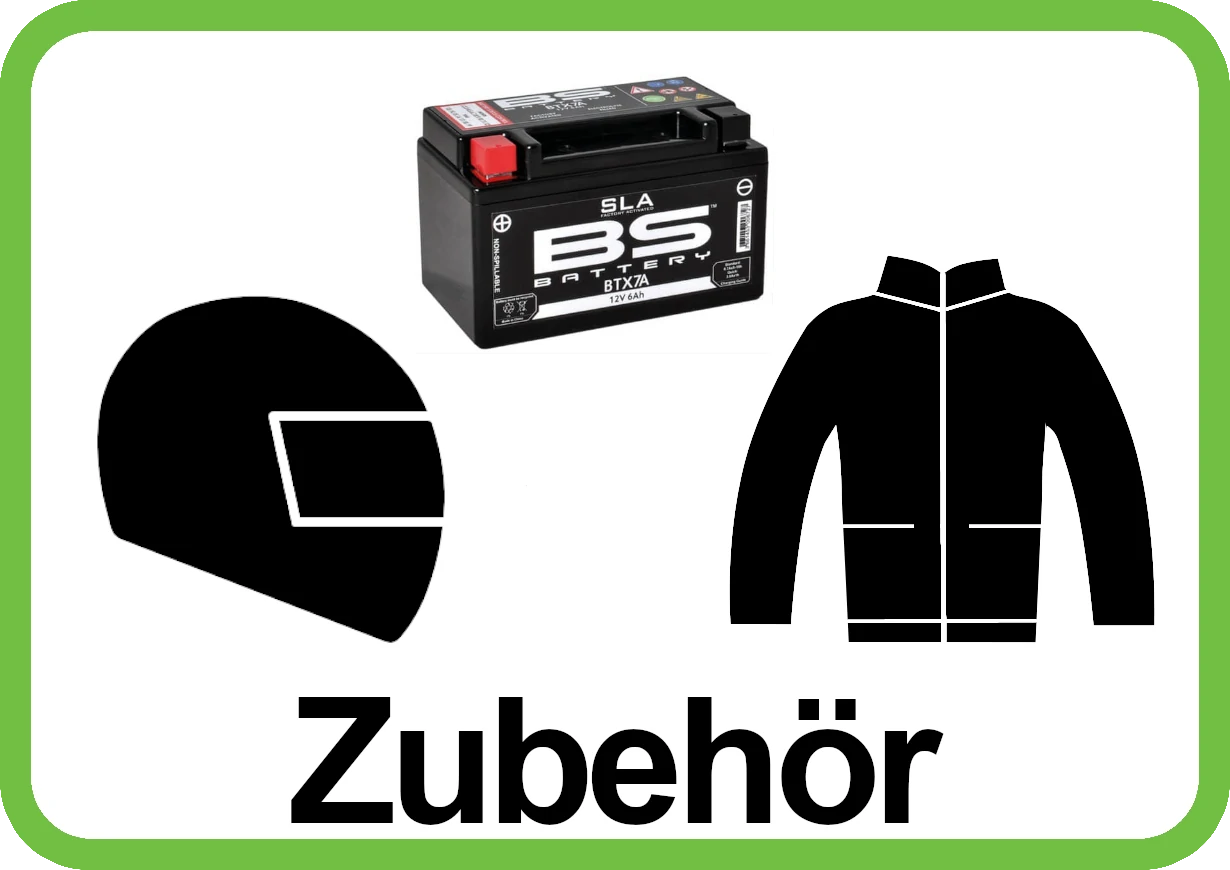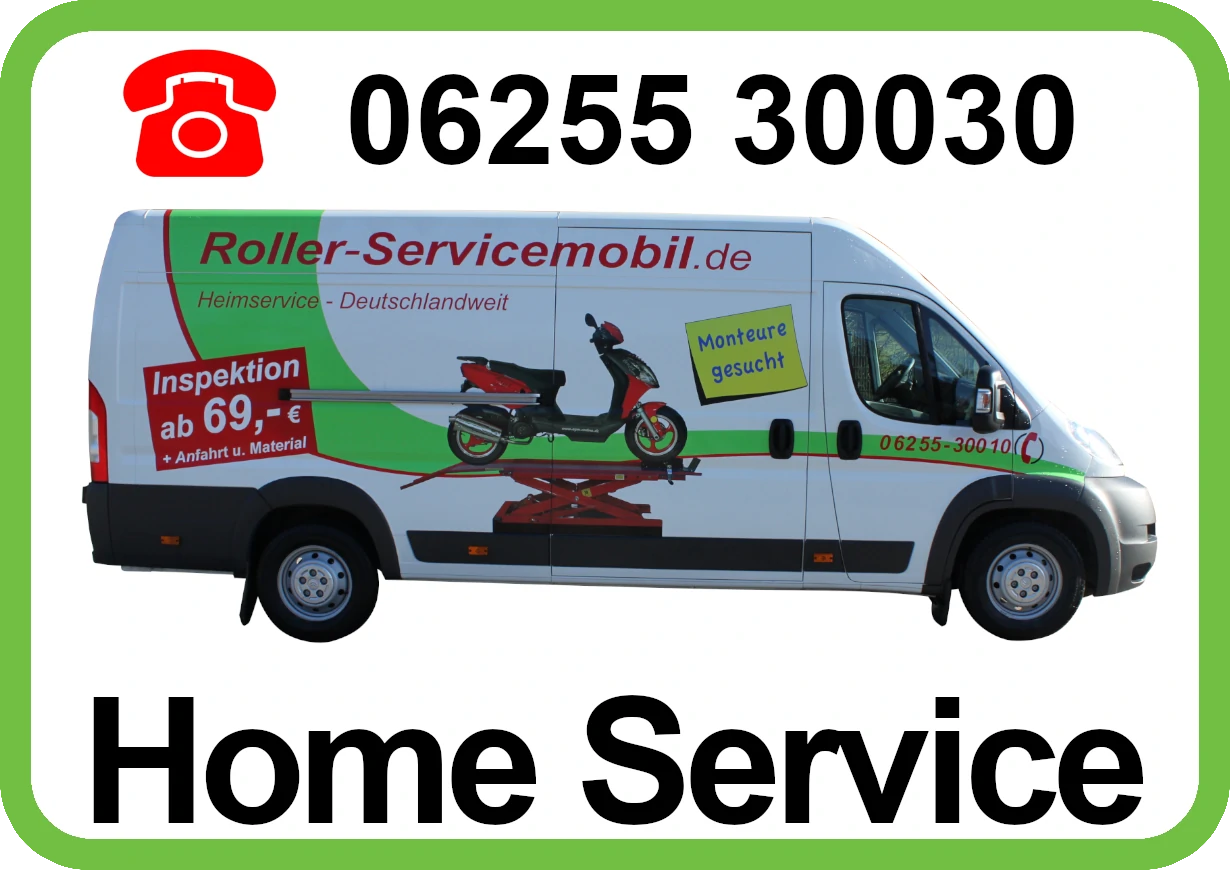Handling and Maintenance
Here you will find information on the handling and maintenance of your vehicle. These also make the inspections easier for you to understand, which you should not miss and should only have our specialist staff carry out.
The engine start
- To start the engine, the scooter should be on the main stand. The side stand must be folded up. If this is still unfolded, the engine cannot start for safety reasons. To extend the main stand, stand on the left side of the vehicle and take hold of the luggage rack with your right hand or the left handlebar grip with your left hand. Your vehicle can now be pulled back and the main stand can be pushed forward with your foot.
- Turn the ignition key to the right to the ON position. If this is in the OFF position, the steering wheel lock is still locked. The steering wheel lock locks automatically when the engine is switched off.
- Pull the right or left brake lever and turn the throttle a little backwards.
- On an electric starter, press the start button. You are ready to go now.
- If your battery is too weak for the electric starter, you can also use the kick starter to start. In this case too, as already explained, the scooter must be on the main stand. The side stand must be folded in and the ignition must be ON. In addition, you have to unfold the kickstarter and then kick it through with force. If the engine does not respond after the third attempt, open the throttle a few times and keep pedaling until the engine starts. After the engine has ignited, fold the kick start lever back in. You are now ready to go.
Drive
While driving, you can only regulate the speed with the throttle grip. To increase the speed, turn the throttle grip towards you. To reduce the speed, however, turn it away from you.
Park
To slow down or stop, turn the throttle forward and pull the brakes at the same time. After stopping, switch the engine off by turning the ignition key to the left to OFF. Finally, fold out the main or side stand for parking.
Full tank
When checking the fuel level, make sure that the needle on the fuel level indicator does not enter the red area. When the tank is empty, the engine can suck in air. If so, you should refuel immediately. To do this, switch off the engine and open the tank cap counter-clockwise. Then fill the tank and screw it back on. Be careful not to overfill the tank.
For maintenance (see maintenance plan)
When it comes to maintenance, we first differentiate between two and four-stroke engines before we start lubricating the engine. In two-stroke engines, this is done as a fuel admixture, with two-stroke oil being added to the gasoline, which is in an extra tank. Maintenance is done by yourself, as you always have to refill the tank. Please check the oil level before every journey so that your engine is not damaged. With four-stroke engines you use engine oil, which you also have to refill yourself. While the two-stroke oil is also burning, the four-stroke oil must be replaced regularly during the inspection. This must be done professionally by a workshop.
Tire pressure
Part of the regular maintenance and control is checking the tire pressure, which you should basically do before every trip. If the tire pressure is too low, the rolling resistance is greater and your two-wheeler rolls over the road. If the pressure is too high, on the other hand, the tire contact area is smaller and the vehicle does not stick enough to the road. This can be dangerous, especially when it is wet or when cornering. If the tires are defective or if excessive wear is determined at the latest during the inspection, have them replaced with suitable and approved tires.
Brake pads and brake fluid
The brake pads must be checked according to the maintenance plan and replaced if necessary. It is the same with the brake fluid. When looking at the level indicator for the brake fluid, make sure that the fluid level is above the minimum mark. If this is not the case, you must have the brakes on your vehicle inspected in advance.
Battery
If you do not use your scooter for a long time, the batteries can discharge. This usually happens within 14 days. Even if you only drive short distances and the battery cannot be charged properly as a result, you can avoid discharging by starting with the Kickstarter instead of the electro starter.
If you have to charge the battery, it is necessary to remove the battery from your vehicle. To do this, the battery can be disconnected by first removing the negative pole and then the positive pole. Clamping takes place in reverse order. If necessary, clean the poles with a steel brush before you start charging. A special battery charger must be used to charge the battery. A charger for car batteries is not compatible with this.
If you do not intend to drive your vehicle for a long time, we recommend removing the battery to prevent the liquid from leaking.
Info: Make sure that the ignition of your vehicle is off during the work.
Caution: batteries must never be opened!
Spark plugs:
During the inspection, your spark plug will be checked and, if necessary, replaced. If you want to replace it yourself, you must ensure that you replace it with a spark plug with the same heat value as that of the engine. After cooling down and removing the old spark plug, you can screw in a new one.
 Service 06255 30030
Service 06255 30030
























